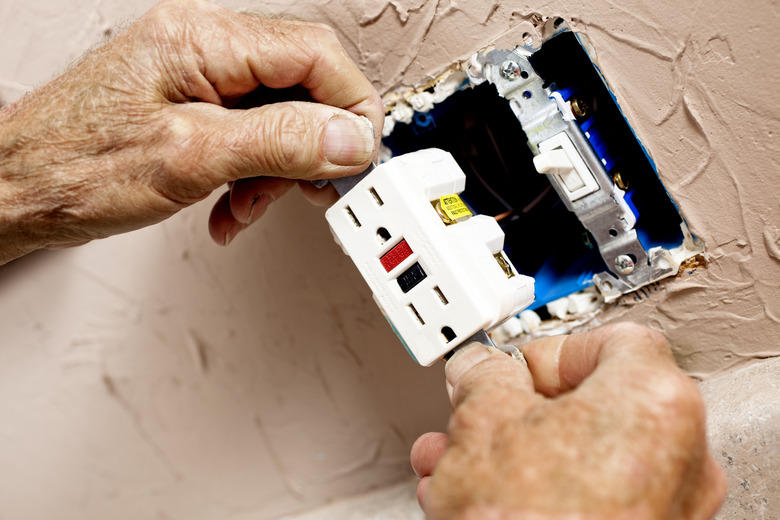What Do Line And Load Mean In Wiring?
A great example of the importance of differentiating between line and load wires when doing DIY electrical repairs is when you're hooking up a GFCI receptacle. This type of receptacle contains a mini circuit breaker that trips when it detects a current surge from a ground fault, and it can save lives. For example, it would prevent you from being electrocuted if you were standing with bare feet on a wet floor in the bathroom and touched a hair dryer with a faulty switch.
Unlike a regular receptacle, a GFCI only works if it's wired properly with the line wires connected to the line terminals and the load wires to the load terminals. To do the wiring properly, you have to know the difference between line and load wires. It isn't a difficult concept to understand, and identifying line wires is easy with the help of a voltmeter.
What Are Line and Load Wires?
Put simply, a line wire is one that feeds power to an electrical device, and a load wire is one that directs the power to another device. A load wire for one device can be a line wire for another because at the point of use, the line wire is the one that's energized, while the load wire isn't. It only becomes energized when connected to the device. Because the line wire is connected to the panel, it carries electricity at 120 or 240 volts, so a thermostat that connects directly to it is known as a line-voltage thermostat as opposed to low-voltage thermostats powered by transformers. Many baseboard heaters employ line-voltage thermostats.
The original line wire in any building is the one from the power company that feeds the electric panel. It energizes the panel and all the circuit breakers installed in it, and every wire connected to a breaker is a load wire. However, when you follow any of these wires to an electrical device (technically called a load), it becomes the line wire for that device. If you hook it up to the device and connect another wire that leads to a second device, the second wire is a load wire, but when you follow it to the second device, it's the line wire for that device.
Line Wire Colors
The line wire is always energized, and many electricians call it the hot wire. If you have done any electrical work, you know that hot wires are usually black, but there are exceptions. In 240-volt circuits, there are two hot wires, and to avoid confusion, one of them is red. Since red is a standard color for hot wires, whenever you see one, you should allow for the possibility that it's a line wire even though it may not be.
Not counting the green or bare ground wire, the other wire in an electric circuit is the neutral wire, and it's always white. It's never live unless it's hooked up to a working device that's on, but when bundled in a cable with a hot wire, it's considered part of a line wire pair for the purposes of making connections. In special circumstances, it can actually be the hot wire, but when it is, it should be wrapped with black tape to indicate that's it's hot.
How to Identify the Line Wire
Consider this common scenario: You're replacing a standard receptacle with a GFCI, so you turn off the circuit breaker, remove the cover plate, pull out the receptacle, and find two black wires and two white wires connected to it. How do you know which pair is the line pair and which is the load pair? You can't tell by noting which pair is connected to the top or bottom terminals because the receptacle will work just as well no matter which pair is on top. The same isn't true for a GFCI; line wires need to be connected to the line terminals (they are usually the top ones, and they're always clearly marked).
There's an easy way to find the line wires. Disconnect the hot and neutral wires from the receptacle and separate them but leave the ground wires connected. Turn on the power breaker and touch one lead of a voltage tester to the ground wires and the other lead to each of the black wires in turn. The line wire will produce a positive voltage reading, but the load wire won't. That wire and the white wire coupled in the same cable are the line pair.
